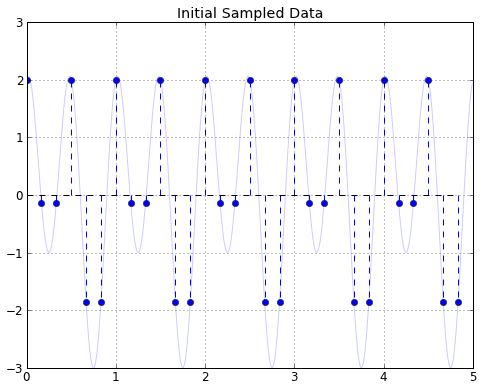I\’ve been working on a new project that involves the creation of an iBeacon. For those not familiar, an iBeacon uses a Low Energy Bluetooth (BLE) advertisement to tell devices, \”you are here.\” I chose the TI CC2541 for the project because it is very integrated (low external part count) and the power draw is low.Continue reading
Capacitive Touch Sensing on the MSP430 – 2013 Edition
I took a look at capacitive touch sensing on the MSP430 in 2011 and it was a little… lacking. I had another project come up and had a chance to play around with it again a couple months ago. It\’s nice to see the changes two years have made to the framework provided by TI.
Continue reading
VHDL Memory Decoder for BF51x
This is just a quick snippet of code for you if you happen to be using a Blackfin BF51x processor and have some space and pins on an external FPGA to spare.Continue reading
White Spaces Standards for Telemetry
You\’ve heard of cognitive radio and the promise of bandwidth where the TV channels are not. We now have a standard for at least one of those. Please welcome Weightless to the list of standards for unlicensed \”white space\” communications. I recently heard a good presentation on what Weightless is and what its potential is.
Nyquist Signal Expansion with Python
I\’ve recently been reading up on software defined radio (SDR). An epiphany that I had recently was that if we have sampled a signal so that we meet the Nyquist criteria, we can reproduce the points between the points we took.Continue reading
These are not the bits you\’re looking for
I\’ve noticed recently that the number of bits available in an ADC is slowly creeping up. That makes me excited… until I look at the system accuracy. Continue reading
Two wrongs make a working prototype
I had an interesting problem show up when I was working on a project at the beginning of the year. It involved an Analog Devices Blackfin 51x series processor. We went to transition to their new IDE and that\’s when we started noticing problems with the Flash RAM.Continue reading
Freescale KL25 Peripheral Selection Guide
I previously wrote my review of the Freescale KL25. Since then I\’ve finished my first design with the KL25. The second spin of the board will see several of the peripherals and pins rearranged. Most of this has to do with things that I glossed over in the documentation desire to get the product to market. None were killers, but required some work-around or are being changed to improve functionality. Continue reading
Freescale KL25 Cortex M-0+ Review
One of the projects I\’m working on I chose to use one of the new Freescale KL25 MCUs. They have an ARM Cortex-M0+ core and lots of peripherals to boot, including ones specifically designed for low power usage. Below are some of the reasons why I chose it, and what my experiences with it have been.
Editing PIC .hex files
… or how to edit a .hex file instead of recompiling it for every option.
I had a product a while back where the customer needed to program it, but we didn\’t want them to have to hassle with compiling it for every (10,000+) permutation. I had a whole build system set up when this was just a few hundred files that would do all the compilations for me (thank you python!). That was now out of the question. There were a few hurdles to do this on a PIC, but we achieved itContinue reading
